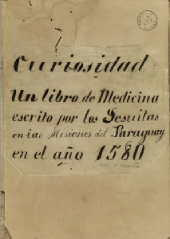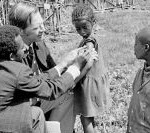Gareth Austin* | Graduate Institute of International and Development Studies, Geneva, Switzerland
Ebola virus disease, a hemorrhagic fever, was first recorded in 1976 in northern Congo DRC (near the Ebola river), and separately in what is now South Sudan. Until the current crisis, subsequent outbreaks had been confined to Central Africa (especially Congo DRC, but including also Uganda, Gabon, and again South Sudan).  Apart from an isolated, non-fatal case in Ivory Coast in 1994, it had not appeared in West Africa until the present outbreak began in December 2013 in Guinea. There is no suggestion that the disease jumped from Central to West Africa: rather, it seems that the virus (in several strains) has a regular reservoir in fruit bats, and reaches the human population via wild animals; after which it spreads from human to human, through contact with bodily fluids.
Apart from an isolated, non-fatal case in Ivory Coast in 1994, it had not appeared in West Africa until the present outbreak began in December 2013 in Guinea. There is no suggestion that the disease jumped from Central to West Africa: rather, it seems that the virus (in several strains) has a regular reservoir in fruit bats, and reaches the human population via wild animals; after which it spreads from human to human, through contact with bodily fluids.
Like the earlier outbreaks, the present one started in a remote village. But Guinea and its neighbors are more densely populated than the peripheral regions of Congo and Sudan, and trade and travel is more intense and frequent, so it is not surprising that this outbreak, unlike its predecessors, reached the major cities, first of Guinea and then of neighboring Sierra Leone and then Liberia. Even so, it might have been speedily contained had the states concerned been stronger (with higher revenues, larger health budgets, and greater capacity to organise rapid quarantines). Ebola is not particularly highly infectious and, despite the absence of a known specific cure, it can be contained by quarantine, while patients have a chance of recovery through supportive care (hydration, treatment of secondary infections).
But Guinea, Sierra Leone and Liberia are among the poorest economies in Africa, with commensurately weak states and health systems. Moreover, the latter two are still recovering from protracted civil wars, and Guinea has suffered recurrent political conflicts, often violent. Perhaps the fact that the survival rate in the present outbreak is higher (47%) than in the earlier ones is partly attributable to it having reached urban areas and thereby perhaps induced a rather quicker medical response. Yet the fact that over 120 medical workers have died so far appears to be primarily attributable to the gross inadequacy of the protective equipment available in government medical facilities, reflecting both lack of government resources, and the fact that government priorities have been elsewhere. Again, it was only in August that the governments began taking drastic action to restrict travel and trade. In early September the recorded scale of the outbreak in the three countries primarily afflicted passed 4,000 cases including over 2,000 deaths. In addition, infected passengers brought the virus from Liberia to Nigeria and from Guinea to Senegal. The governments in Nigeria and Senegal, alerted by the news of the original outbreak, responded more speedily and, so far, apparently more effectively: by the end of August there were 21 cases, including 7 deaths, in Nigeria, and one case, and no death, in Senegal. Among the three main victim countries, Guinea seems to have been the most successful so far in coping with the crisis: despite being the source of the outbreak, it has had far fewer cases and deaths, and in August was claiming that it would have contained the disease, but for an influx of patients from Sierra Leone.
Overseas help has been gradually increasing – Médecins Sans Frontières were there at the start, and most recently Cuba has promised to send a team of 165 medical staff to Sierra Leone – with the World Bank and United Nations being prominent, as well as WHO. But the US $200 promised by the World Bank includes money already allocated to the region, and will therefore be at the expense of other projects.
Even allowing for the fact that, as the WHO emphasises, the true toll of ebola cases and deaths in the West African outbreak is probably several times that recorded, it appears to be well under 10% of the deaths caused in the same period by the combination of malaria, AIDS, TB and diarrhea. The economic costs will be much higher than the mortality rate suggests, partly because of the effects of the quarantine measures, and partly because of the disruption caused by panic. Besides the direct loss of workers – including highly skilled physicians – from the disease, doubtless there have already been further deaths and delayed recoveries resulting from the loss of medical personnel. The travel restrictions imposed by the governments of the countries primarily concerned, for example by Sierra Leone in August, were wide-scale because the outbreak had already spread very widely. Enforced by armed soldiers and police, they had immediate impacts, in some cases preventing people from getting to work and very often preventing them from getting to market. Cross-border trade – vital to the regional economy – has been greatly reduced. There have been reports of passengers refusing to accept the crowding usual on public transport, for fear of catching the disease. This has a more subtly damaging effect on the economy, by reducing the utilisation of the available facilities. Several airlines have stopped flights to the most affected countries, disrupting business relationships and tourism. Guinea, Liberia and Sierra Leone all rely heavily on the export of minerals exported by foreign mining companies. There have been reports of some of the latter withdrawing foreign staff and reducing activity. It is too early to do more than guess at the aggregate effect, but the World Bank has revised its estimates for GDP growth in Guinea this year downwards by 1 percentage point. That may well prove a conservative estimate, for all three of the most affected countries. Finally, the longer the outbreak lasts – and it is still spreading – the more likely it is that the confidence of foreign investors, recently boosted by the ‘Africa rising’ narrative, will be eroded by evidence of inadequate government response to the disease. Living standards will be affected even when the surviving patients recover.
* Gareth Austin teaches African and comparative economic history in the International History department of the Graduate Institute in Geneva. He taught previously at the University of Ghana and the London School of Economics (Economic History department). His publications include Labour, Land and Capital in Ghana: From Slavery to Free Labour in Asante, 1807-1956 (University of Rochester Press, 2005) and (edited with Kaoru Sugihara), Labour-Intensive Industrialization in Global History (Routledge, 2013).
For other articles published in our journal in English and Portuguese, see
Correa, Sílvio Marcus de Souza. ‘‘Combating’ tropical diseases in the German colonial press.’ Hist. cienc. saude-Manguinhos’ [online]. 2013, vol.20, n.1, pp. 69-91
Havik, Philip Jan. ‘Public health and tropical modernity: the combat against sleeping sickness in Portuguese Guinea, 1945-1974.’ Hist. cienc. saude-Manguinhos, June 2014, vol.21, no.2, p.641-666.
Sá, Magali Romero and Maia-Herzog, Marilza. ‘Doença de além-mar: estudos comparativos da oncocercose na América Latina e África.’ Hist. cienc. saude-Manguinhos, Abr 2003, vol.10, no.1, p.251-258.














